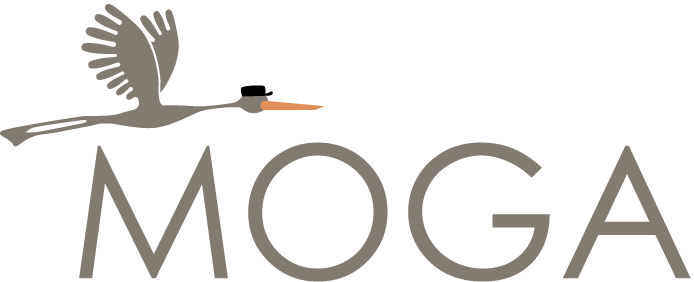There’s no doubt that cesarean sections are an important medical procedure that can save lives and prevent serious complications in both mother and baby. According to the CDC, c-sections currently account for about 30% of all births in the US, making it one of the most common surgical procedures in the country. Here at MOGA, we believe informed patients make the best patients. Every expectant mother should know the basics behind a c-section, from how it’s performed to what makes it necessary. To learn more about the common reasons for a cesarean section, keep reading below!
What happens during a cesarean section?
A cesarean birth is the surgical delivery of a baby through an incision made in the mother’s abdomen and uterus. The incision made in the skin may be vertical, extending from the belly button to the pubic hairline, or horizontal, extending across the pubic hairline. The latter is used more often because it heals well and causes less bleeding, but the type of incision chosen will depend on the health of the mother and baby. The uterine incision may also be either vertical or horizontal.
What are some of the reasons for a planned c-section?
Many cesareans are scheduled in advance, particularly if the provider is worried that the mother and baby are at risk of complications during the birthing process. Some of the most common reasons for a planned c-section include the following.
Previous cesarean deliveries or surgeries
Although the majority of women who have had a c-section can go on to give birth vaginally, those who have had certain types of c-sections previously may have a higher risk of uterine rupture. The same holds true for women who have undergone any type of invasive uterine surgery.
Multiple babies
Women who are carrying twins, triplets, quintuplets, or more may require a c-section. This will depend on how far along she is in the pregnancy, the position of the babies, and several other factors.
The baby’s position
Doctors often recommend a c-section if the baby is breech or transverse. A baby is breech when it’s positioned to come out with its feet first instead of the head. A transverse presentation means the baby is lying sideways, with its arm or back facing the vaginal opening. Because each of these positions increases the risk of complications, a c-section may be the safest option for both mother and baby.
The position of the placenta
Sometimes a woman’s placenta hangs low enough that it covers the cervix. This condition is called placenta previa, and it can cause severe bleeding during the birthing process. It can also block the baby’s path during the delivery process, making a c-section necessary.
The size of a woman’s pelvis
Some women have cephalopelvic disproportion, or a pelvis that is too small for the baby to come through safely. A healthcare provider may recommend a c-section in cases like this in order to avoid causing trauma to the baby and mother.
The size of the baby
Most babies, even large ones, can be birthed vaginally. If a baby is expected to be significantly bigger than average, however, a c-section may be the better option.
Birth defects
If a baby is known to suffer from certain birth defects, such as congenital heart disease, an obstetrician may recommend a cesarean instead of vaginal birth in order to reduce the risk of complications.
Chronic health conditions
For women who suffer from chronic health conditions such as diabetes, heart disease, and high blood pressure, vaginal births may be too difficult. C-sections also tend to be recommended for mothers who suffer from a transmissible disease like HIV or genital herpes.
What are some of the reasons for an emergency c-section?
There are times when a doctor needs to perform an emergency cesarean section during the birthing process. This is usually to avert a dangerous situation where the mother or baby is at immediate risk of complications, such as:
Prolonged labor
When a first-time mother has been in labor for more than 20 hours, or a woman who has given birth before has been laboring for more than 14 hours, it’s referred to as “stalled labor” or “failure to progress.” This won’t always necessitate an emergency c-section, but this procedure can prevent a dangerous situation from developing.
Fetal distress
Babies can go into distress during the birthing process if they are not receiving enough oxygen or if their heart rate becomes abnormal. Depending on the situation, immediate help may be necessary in the form of an emergency c-section.
Cord prolapse
Cord prolapse is a very serious condition that occurs when the umbilical cord falls through the cervix before the baby is delivered. As the baby comes out of the vagina, the cord can wrap around its neck and cut off the oxygen flow. Without intervention, this could result in dire complications or even death.
Placental obstruction
An emergency C-section may be required if the placenta begins to separate from the uterine wall, which could lead to oxygen deprivation for the baby.
What are some of the reasons for an elective c-section?
Most c-sections are performed for medically necessary reasons, but some are elective. Every woman has her own reasons for choosing a c-section over vaginal birth, and for them, the benefits outweigh any potential risks. Elective c-sections can also lower the risk of postpartum incontinence, postpartum sexual dysfunction, oxygen deprivation, and trauma.
That being said, many obstetricians will advise against elective c-sections, which do carry a higher risk of complications than vaginal deliveries. In addition, elective procedures may lead to longer hospital stays and the need for repeat c-sections in the future.
Get the birth you want with the skilled support of MOGA doctors
The MOGA team prides itself on developing meaningful relationships with our expectant mothers, and will be with you throughout your pregnancy and birth, whatever form that takes! Our practice is staffed by the most skilled doctors and has all the resources you need for a delivery plan that will ensure both your health and that of your baby. Once you understand the common reasons for a cesarean section, you can have peace of mind going into the delivery room.
Memphis Obstetrics & Gynecological Association, P.C. is the largest private women’s health practice in the Mid-South area, and has been providing superior service to our patients for over 30 years. With dozens of doctors and nurse practitioners available in Memphis, Germantown, Bartlett, and Southaven, we make it easy for you to get the personalized care you need through every stage of your pregnancy!
If you’re looking for more information on cesarean sections or any other aspect of pregnancy, our team is happy to help. You can make an appointment with us by calling our office or schedule one online through our website.




